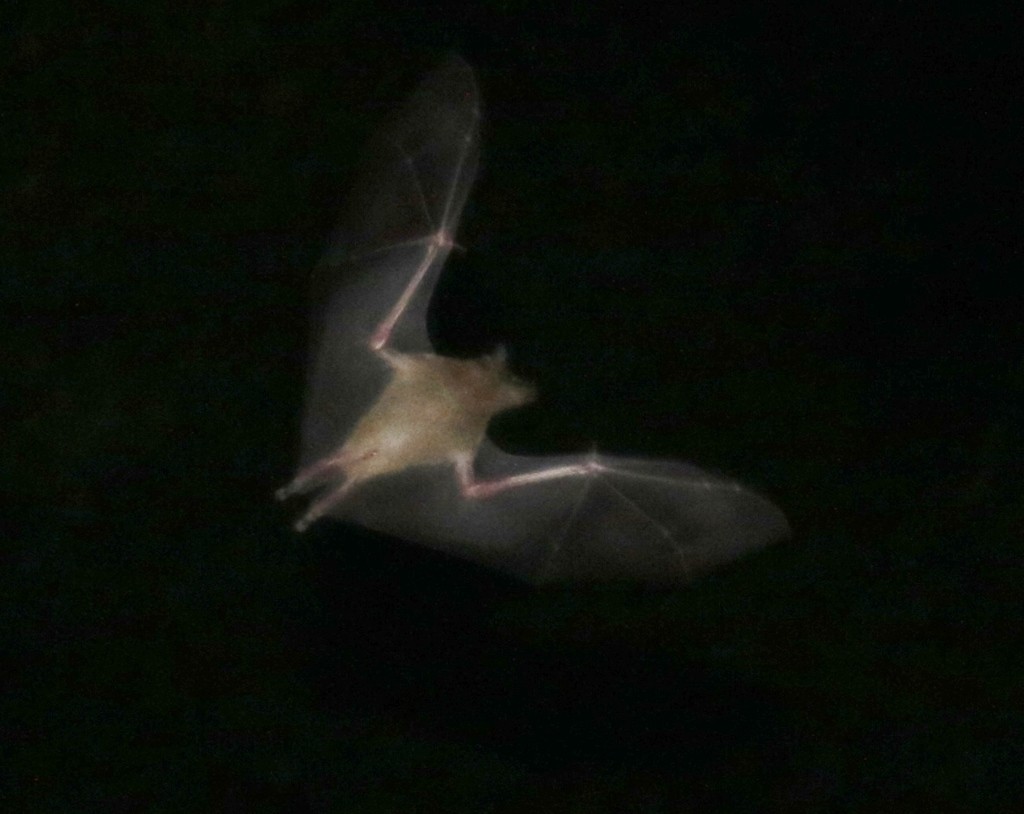Lesser long-nosed bat
A species of Saussure's long-nosed bat, Also known as Mexican long-nosed bat Scientific name : Leptonycteris yerbabuenae Genus : Saussure's long-nosed bat
Lesser long-nosed bat, A species of Saussure's long-nosed bat
Also known as:
Mexican long-nosed bat
Botanical name: Leptonycteris yerbabuenae
Genus: Saussure's long-nosed bat
Content
Description People often ask General Info
 Photo By silversea_starsong , used under CC-BY-NC-4.0 /Cropped and compressed from original
Photo By silversea_starsong , used under CC-BY-NC-4.0 /Cropped and compressed from original Description
Lesser long-nosed bats are relatively small bats, with a total length as adults of around 8 centimetres (3.1 in), and weighing between 15 and 25 grams (0.53 and 0.88 oz), depending on the time of year. Males and females are similar in size, and virtually indistinguishable. As their common name implies, they have a long, narrow snout, and this terminates in a small triangular nose-leaf. While they do have three internal caudal vertebrae, they have no visible tail. The tongue of lesser long-nosed bats has a number of adaptations for lapping nectar, including long ridges and rough, conical papillae, which may also help protect against periodontal disease by scraping the teeth clean. Their wings have a high wing loading, allowing for energy efficient long-distance flight in open habitats, at the expense of manoeuvrability. Only three other species of North American bat have a nose-leaf, and two of these, the Mexican long-tongued bat, and the California leaf-nosed bat, have a distinct tail, and also, in the latter case, much larger ears than lesser long-nosed bats do. They are more easily confused with their close relatives, the greater long-nosed bats, but, in addition to being about 10% larger, the latter have shorter, greyish fur, and proportionately longer wings. Adult lesser long-nosed bats are yellow-brown or grey above, with rusty brown fur below. Their ears are small. 
Size
8 cm
Colors
Brown
Yellow
Gray
Life Expectancy
8 years
Nest Placement
Cavity
Feeding Habits
Lesser long-nosed bat primarily consume nectar from night-blooming cacti and agaves, acting as important pollinators. They also eat cactus fruits and winter pollen. Lesser long-nosed bat roost in large colonies, forage nocturnally, and exhibit seasonal migrations to access food.
Habitat
Lesser long-nosed bats inhabit semi-arid grassland, scrub, or forest habitats below about 550 m. They are able to tolerate unusually high temperatures of up to 41 ℃, due in part to a low metabolic rate. They do not enter torpor or hibernate, but die at ambient temperatures of below about 10 ℃. In the north, they reach southern California, Arizona and New Mexico. However, they are only found as summer migrants in the United States and, more generally, north of the mid-Sonora, arriving in these regions between April and July, and migrating south again in September. Some individuals have been estimated to migrate as far as 1,600 kilometres (990 mi) each year. Their migratory patterns have been shown to follow a path determined by seasonal availability of food plants, with cacti, Agave, and plants of the C3 metabolic pathway being strong predictors of distribution. They are found year-round in the western and southern parts of Mexico, and along the east coast, and in Guatemala, El Salvador, and Honduras. There are no recognised subspecies. 
Dite type
Nectivorous
People often ask
General Info
Feeding Habits
Bird food type
Behavior
Lesser long-nosed bats feed mainly on nectar from night-blooming plants such as saguaro, Organ Pipe Cactus, as well as century plant and other agaves. They are important pollinators of night-blooming cactus. They may also eat some cactus fruits, and, during the winter, on pollen from a range of other plants as the opportunity arises. Lesser long-nosed bats roost during the day in large colonies of up to several thousand individuals in caves or abandoned mines, dispersing at night to feed. The size and composition of such colonies varies throughout the year, as the bats migrate to summer feeding grounds. At some times of the year, many colonies become occupied only by nursing females and their young, with males occupying smaller temporary roosts. 
Distribution Area
Lesser long-nosed bats inhabit semi-arid grassland, scrub, or forest habitats below about 550 metres (1,800 ft). They are able to tolerate unusually high temperatures of up to 41 °C (106 °F), due in part to a low metabolic rate. They do not enter torpor or hibernate, but die at ambient temperatures of below about 10 °C (50 °F). In the north, they reach southern California, Arizona and New Mexico. However, they are only found as summer migrants in the United States and, more generally, north of the mid-Sonora, arriving in these regions between April and July, and migrating south again in September. Some individuals have been estimated to migrate as far as 1,600 kilometres (990 mi) each year. Their migratory patterns have been shown to follow a path determined by seasonal availability of food plants, with cacti, Agave, and plants of the C3 metabolic pathway being strong predictors of distribution. They are found year-round in the western and southern parts of Mexico, and along the east coast, and in Guatemala, El Salvador, and Honduras. There are no recognised subspecies. 